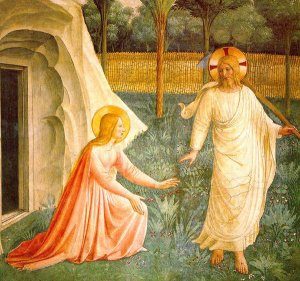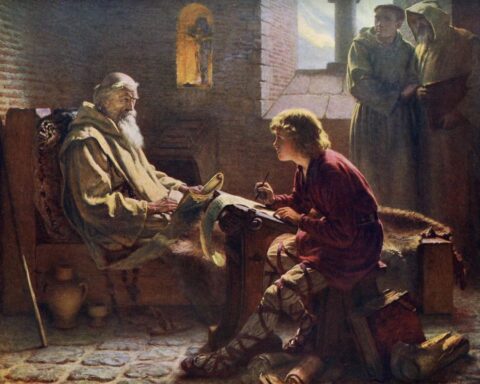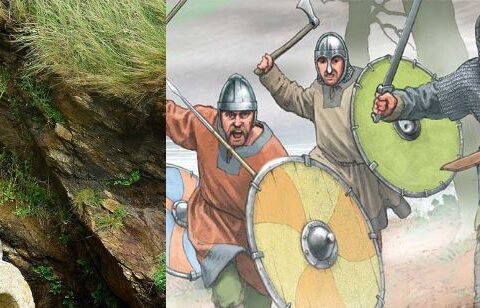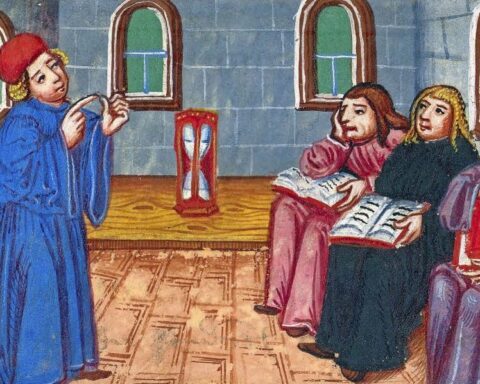A young Christian asks an old one:
I’ve read a number of secular scholars who argue that Mary Magdaline only saw a vision of Jesus Christ on Easter morning, since we know that Jesus could not have really risen from the dead. After all these years, how can we be sure what she really saw?
I’ve written before at Men of the West about the intersection between miracles and secular scientists. This piece, for example, deals with Jesus walking on water.

The trick to the whole scam is that scientists usually give a naturalistic interpretation of one small part of the whole story, while ignoring the bulk of what the story demands. In the case of Jesus walking on water that was really ice, it’s that all the other guys there saw no ice. In the case of Mary seeing a vision, we must ignore everything that came after that.
So let’s say Mary saw a vision and Jesus was still rotting in the tomb. We have to believe that 12 men who had lived with Jesus for the past three years took the word of a woman who was marginally attached to their party that Jesus had risen from the dead. Then they ran off all over the world to die gruesome deaths because of that message, and yet not one of them (nor any Jewish or Roman authority) bothered to take a 5 minute walk outside the city gate to view the corpse. Stop me when it gets ridiculous.
To bring it to a modern parallel, let’s say that you have a dozen guys you play Xbox with every weekend for years. One of them dies in a car wreck. A few of the guys saw him die and be hauled off by the bone wagon. You’re all devastated and miss him badly. The next thing you know, the dead guy’s psycho ex-girlfriend is saying that she saw him alive. You can either:
- Go to the funeral home and check if he’s still there, or
- Head out into the world and proclaim him miraculously respawned as your savior.
The idea that anyone would choose b) before doing a) is ludicrous, which is why such necessities of the scientists’ stories are simply never explored. It’s easy to say Mary saw a vision. It’s impossible to argue that Peter and Paul died horrible deaths in Rome after 30 years of preaching the risen Christ because Mary saw a vision.
So what’s behind such argumentation on the part of scientists? The first thing to look for – and once you see it, you’ll see it everywhere – is that they are not arguing evidence. They are beginning with the assumption that the supernatural doesn’t exist, that miracles don’t occur, and trying to explain a happening within those constraints.
But those are not logical constraints or even scientific constraints; they are philosophical ones. The naturalistic explanations arise from the presumption of naturalism, which is itself anti-scientific. Still, it’s amazing how many scientists who swear off miracles believe in dark matter. There is far more evidence for the former than the latter.
But let me wrap up by saying this: neither you nor I nor anyone else can prove that Mary did not have a vision. Nor can anyone prove that she did. What we must go by is the preponderance of evidence. In favor of the Risen Christ we have:
- Mary saying she saw Christ risen
- The disciples saying they saw Christ risen
- The Pharisee Saul being converted to Paul when he saw Christ risen
- The rapid growth of the Church
- The unshakeable faith of the early Church
- The voluntary suffering of the early Church
- The fact that no authority ever produced a body
- The fact that no Christians in those first centuries even muttered about visiting Christ’s tomb.
In favor of Mary seeing a vision we have:
- The philosophical presumption that miracles don’t exist.
If we accept that Mary went to the tomb and saw something, there is no evidential reason to conclude that it was a vision.The Christian is free to follow the evidence to belief.
But for those who hold to the philosophical proposition that miracles do not occur, a vision or mass hallucination, however unlikely, is the only conclusion they can draw.
Who are the freethinkers now, I wonder?










5
4.5